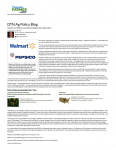High GI diets may increase fatty liver risk - study
risk of fatty liver, a condition linked to liver failure, suggests
a new study with mice.
Researcher from Children's Hospital Boston indicate that if the findings of the study are confirmed in humans, consumption of low GI foods may offer an easy prevention for fatty liver, a condition on the increase as obesity levels rise. "Our experiment creates a very strong argument that a high-glycemic index diet causes, and a low-glycemic index diet prevents, fatty liver in humans," stated lead researcher David Ludwig. The interest in the GI of foods and the digestibility of carbohydrates has increased considerably in recent years. A number of studies suggest that a low GI and slowly digestible carbohydrates can contribute to the prevention of obesity and diabetes. The glycaemic index measures how quickly certain foods release carbohydrates into the body, which then raise consumers' blood glucose levels. High GI foods, including white bread, white rice, many prepared breakfast cereals and concentrated sugar, cause blood sugar levels to rise more rapidly. Low GI foods include most vegetables, fruits, beans and unprocessed grains. The new study, published in the September issue of the journal Obesity, investigated the effect of feeding mice either a high or low GI diet containing a type of cornstarch that was either quickly or slowly digested, respectively. Diets were then controlled to contain equal calories, fat, protein and carbohydrates. Ludwig and co-workers report that, after six months, the mice weighed the same. However, mice on the low GI diet were lean, with normal amounts of body fat, while the animals fed the high GI diet had double the normal amount of fat in their bodies, blood and livers. The researchers have since launched a clinical trial to investigate if a low GI diet can reverse fatty liver in overweight children, aged eight to 17. The mechanism behind the apparent damage of consuming a high GI diet is due to increased production of insulin, said Ludwig. After production in the pancreas, the hormone is concentrated in the liver, resulting in increased production and storage of fat. An increased level of fat in the liver is usually symptomless, he said, but it does increase the risk for liver inflammation, which may ultimately result in liver failure. Fatty liver is reportedly on the rise in the US, with between one quarter and one half of American children said to have the condition. Only one case of fatty liver was reported in children in the US in 1980. "This is a silent but dangerous epidemic," said Ludwig. "Just as type-2 diabetes exploded into our consciousness in the 1990s, so we think fatty liver will in the coming decade." The food industry is responding to the growing obesity problem with the launch of more and more low GI foods. The World Health Organisation (WHO) has described obesity as one of the most blatantly visible yet most neglected public health problems. Source: Obesity Volume 15, Number 9 Authors: D. Ludwig et al.




















